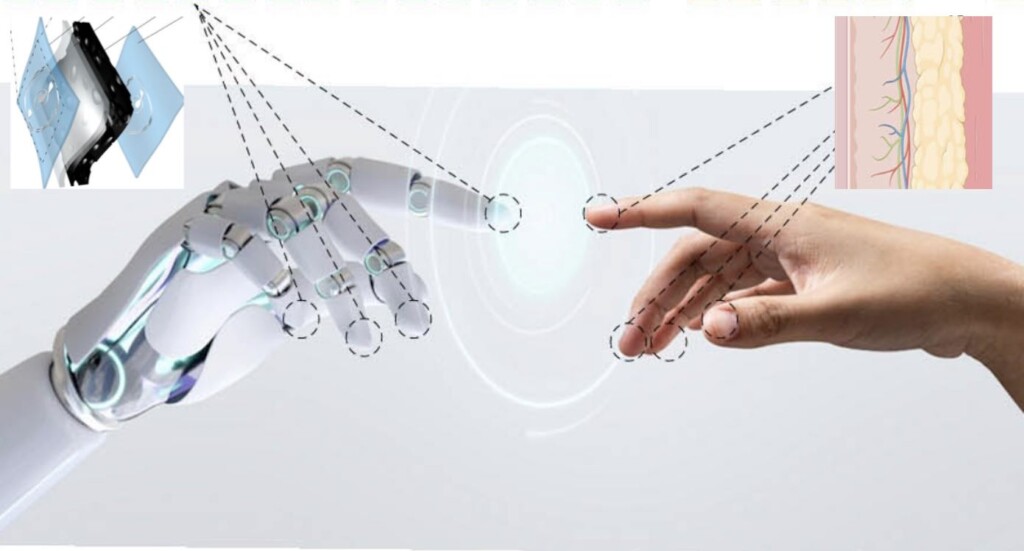 Tsinghua University in Beijing (via SWNS, cropped and rearranged)
Tsinghua University in Beijing (via SWNS, cropped and rearranged)A robotic sorting system that mimics the human sense of touch to sort through litter achieved a 98.85% accuracy rate in recognizing various domestic waste items.
The inventors believe this state-of-the-art automaton could eventually lead to better treatments for people with hand disabilities aside from better outcomes at recycling facilities.
Sorting robots are already present at over 40 of the United States' 600 recycling centers. Many of these sorting systems are twice as fast, and even more accurate than humans.
Recently, a research team at Tsinghua University in Beijing explained that tactile sensing and logical reasoning can aid a robot’s ability to recognize and classify objects, even when equipped with sophisticated visual sensing.
They say today’s intelligent robots can accurately recognize many objects through vision and touch, but tactile information, obtained through sensors, along with machine learning algorithms, also enables them to identify objects previously handled.
But when presented with objects similar in size and shape, or objects unknown to the robot, the sensing is often confused.
The team at Tsinghua worked to break through the difficulties of robotic recognition of several common, yet complex, items through the endowment of “thermal feeling.”
“Humans possess many different types of touch sensing, one of which is thermal feeling,” said study author Professor Rong Zhu.
“This allows us to sense the wind blowing, perceive hot and cold, and discriminate between matter types, such as wood and metal, because of the different cooling sensations produced.”
Zhu and his team aimed to mimic that ability by designing a robotic tactile sensing method that incorporated thermal sensations for more robust and accurate object detection.
“We propose utilizing spatiotemporal tactile sensing during hand grasping to extend the robotic function and ability to simultaneously perceive multi-attributes of the grasped object, including thermal conductivity, thermal diffusivity, surface roughness, contact pressure, and temperature.”
MORE ROBOTIC ADVANCEMENTS: Sharp-Shooting Farm Robot Can Treat 500,000 Plants Per Hour With 95% Decrease in Chemical Sprays
The team created a layered sensor with material detection at the surface and pressure sensitivity at the bottom, with a porous middle layer sensitive to thermal changes.
They paired the sensor with an efficient cascade classification algorithm that rules out object types in order from easy to hard, starting with simple categories—such as empty paper cartons—before moving on to orange peel or scraps of cloth.
When installed in an intelligent robot tactile system the arm picked up a range of common trash items, including empty cartons, scraps of bread, plastic bags, plastic bottles, sponges, napkins, orange peels, and out-of-date drugs.
MORE RECYCLING ROBOTS: Robot Named Sorty McSortface Uses Mechanical Claws and AI to Sort Tons of Recyclables in Minutes
It sorted the litter into separate containers for recyclables, food scraps, hazardous waste, and other waste.
Their system achieved a classification accuracy of 98.85% in recognizing various waste items not encountered previously, according to the findings published in the journal Applied Physics Reviews.
“By combining this sensor with brain-computer interface technology, tactile information collected by the sensor could be converted into neural signals acceptable to the human brain, re-empowering tactile perception capabilities for people with hand disabilities,” Professor Zhu added, expounding on where he thought future research would go.
SHARE This Great Advancement In Robotics With Your Friends…
Source link

